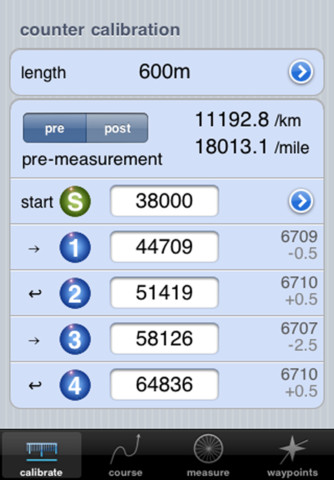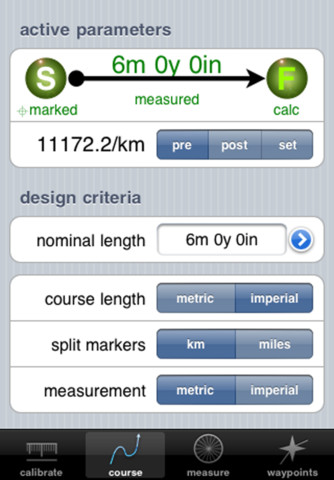I've just submitted to the iTunes App Store an app entitled 'UKCM' which was written specifically to automate and log all the calculations that we perform in the process of measuring a course. The programme’s algorithms are compliant with the standard measurement techniques using a ‘Jones’ counter.
The user can designate the length of the calibration course and configure various options as a definition for the course to be measured. Counter values are entered to calculate the calibration constants.
With this initial information race start, split and finish points are determined in both distance terms and counter readings. All data are dynamically recalculated as parameters change allowing instant results to be displayed. During the measurement run itself, counter values can be logged at each desired reference point with distance to the next pertinent points being presented. The complete list of logged reference points together with the automatically generated split points can be inspected and manipulated before being output to your favourite spreadsheet for further processing or presentation. 'Location aware' devices can store the approximate position of logged points which can be viewed on a map.
The app has been field-tested using iOS4.2, is compatible up to iOS5 and should run on an iPhone, iPod Touch or iPad.
Feedback would be particularly welcome to improve the usability of the app and to iron out any wrinkles. I can certainly incorporate any corrections or good suggestions that are generated here.
I hope that it proves a useful and reliable time saver.
Links are below for the app and the instructions...
Dougie
http://itunes.apple.com/gb/app/ukcm/id511625914?mt=8
http://www.i-crabs.co.uk/i-crabs/UKCM.html
Original Post


